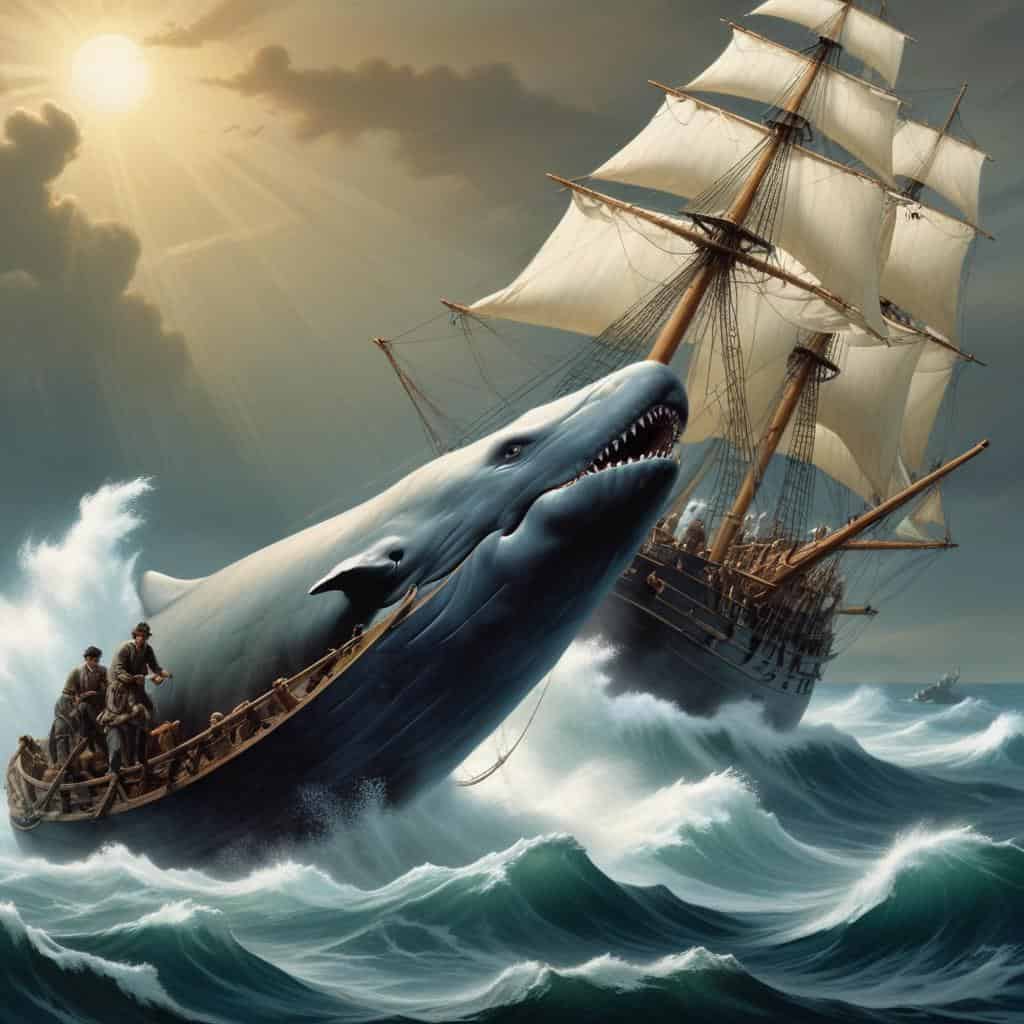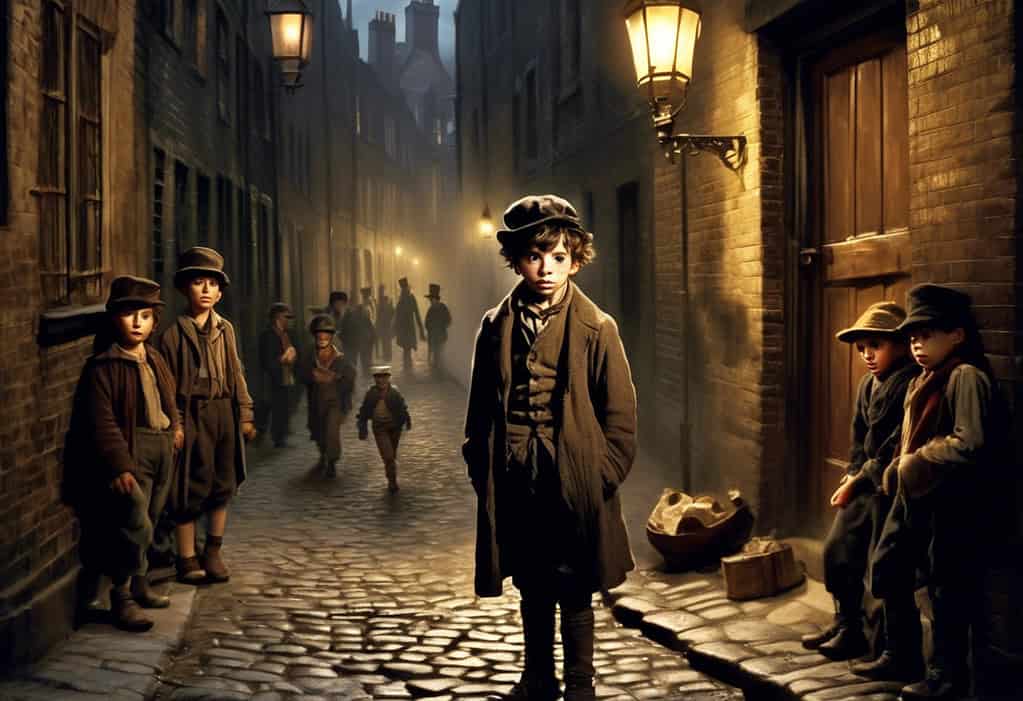Herman Melville’s classic novel, Moby Dick, is a timeless tale of obsession, revenge, and the power of nature. Set aboard a whaling ship in the 19th century, the story follows the journey of Captain Ahab as he seeks vengeance against the elusive white whale that took his leg.
As the crew of the Pequod embarks on their dangerous quest, they encounter a host of colorful characters, including the young sailor Ishmael and the mysterious Queequeg. Together, they face treacherous waters, fierce storms, and the relentless pursuit of their quarry.
Through Melville’s rich prose and vivid descriptions, readers are transported to a world of adventure and danger on the high seas. Moby Dick is a masterpiece of American literature that continues to captivate audiences with its themes of fate, morality, and the unyielding force of nature.
List of Characters
1. Captain Ahab
Captain Ahab is the obsessed and vengeful captain of the whaling ship Pequod. He is on a mission to hunt down and kill the white whale, Moby Dick, who maimed him in a previous encounter.
2. Ishmael
Ishmael is the narrator of the novel and a crew member on the Pequod. He is a thoughtful and introspective character who provides insight into the events and themes of the story.
3. Queequeg
Queequeg is a harpooner on the Pequod and Ishmael’s close friend. He is a skilled and fearless sailor, as well as a member of the fictional South Sea island of Kokovoko.
4. Starbuck
Starbuck is the first mate of the Pequod and a voice of reason and morality on the ship. He is conflicted about Captain Ahab’s reckless pursuit of Moby Dick and tries to convince him to abandon the quest.
5. Stubb
Stubb is the second mate of the Pequod and a lighthearted and easygoing character. He is known for his humor and practicality, which provide a counterbalance to the seriousness of the other crew members.
Moby Dick Summary
The Beginning of the Journey
At the start of the novel, we meet Ishmael, a young sailor who embarks on a whaling journey aboard the Pequod, captained by Ahab. Ishmael befriends Queequeg, a harpooner from the South Pacific, and the two form a strong bond. As the ship sets sail, Ahab reveals his obsession with hunting down the white whale, Moby Dick.
Ahab’s Obsession
Ahab’s obsession with Moby Dick stems from a previous encounter where the whale bit off his leg. He is consumed with revenge and is willing to risk everything, including the lives of his crew, to find and kill the whale. The crew is divided between those who support Ahab and those who fear his reckless pursuit.
The Hunt for Moby Dick
As the Pequod sails through the seas, they encounter various other whaling ships, each with its own unique crew and captain. Ahab becomes increasingly erratic and single-minded in his pursuit of Moby Dick, ignoring all warnings and signs of danger. The tension on board the ship grows as the crew becomes more desperate and fearful.
The White Whale
After a long and arduous journey, the Pequod finally comes face to face with Moby Dick. Ahab orders the crew to attack the whale, leading to a fierce and epic battle. In the chaos, Ahab is thrown overboard and dragged underwater by the whale, ultimately meeting his demise.
The Aftermath
With Ahab gone, the crew is left to fend for themselves as they try to navigate the treacherous waters. The Pequod is eventually destroyed in a violent storm, leaving Ishmael as the sole survivor. He is rescued by a passing ship and reflects on the events that led to the tragic end of the Pequod and its crew.
The Symbolism of Moby Dick
Moby Dick is not just a story about a vengeful captain and a giant whale. It is a complex and symbolic tale that explores themes of obsession, fate, and the destructive power of revenge. The white whale represents the unknowable forces of nature and the limits of human knowledge and control.
The Legacy of Moby Dick
Despite its initial lack of success, Moby Dick has since become a classic work of American literature. Its rich symbolism, vivid imagery, and philosophical themes have captivated readers for generations. The novel continues to be studied and analyzed for its deep insights into the human condition and the nature of obsession.
The Impact of Moby Dick
Moby Dick has influenced countless other works of literature, art, and popular culture. Its themes of revenge, obsession, and the struggle against nature have resonated with audiences around the world. The novel’s enduring legacy is a testament to the power of storytelling and the timeless relevance of its themes.
The Lessons of Moby Dick
Through the story of Ahab and Moby Dick, Melville reminds us of the dangers of unchecked ambition and the destructive consequences of revenge. The novel serves as a cautionary tale about the dangers of obsession and the importance of finding balance and harmony with the natural world. It challenges readers to reflect on their own desires and motivations, and the consequences of their actions.
The Enduring Appeal of Moby Dick
Despite its dense prose and philosophical themes, Moby Dick continues to captivate readers with its powerful storytelling and timeless message. The novel’s exploration of human nature, fate, and the mysteries of the sea resonate with audiences of all ages and backgrounds. Moby Dick remains a literary masterpiece that will continue to be read and appreciated for years to come.
Conclusion
In conclusion, Herman Melville’s “Moby Dick” is a timeless tale of obsession, revenge, and the power of nature. The novel follows Captain Ahab’s relentless pursuit of the elusive white whale, Moby Dick, leading to a dramatic and tragic climax.
Through vivid descriptions of life at sea, complex characters, and philosophical musings, Melville weaves a rich tapestry that explores themes of fate, free will, and the destructive nature of vengeance. “Moby Dick” is a classic work of literature that continues to captivate readers with its gripping storyline and profound insights into the human condition.



